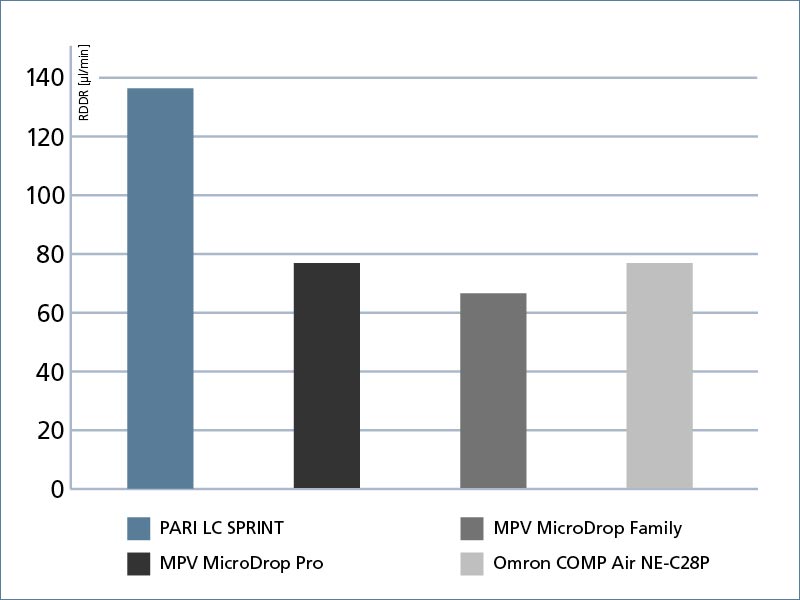With nebuliser therapy, the amount of medication that reaches the lungs is crucial. The particles that the nebuliser produces from the inhalation solution must be relatively fine in order to be able to get into the lungs. Droplets ≤ 5 µm are therefore also referred to as respirable particles.
The more medication that reaches the lungs per minute, the more efficient a nebuliser system is. There is an objective parameter for efficiency: the Respirable Drug Delivery Rate (RDDR), which describes the respirable dose per minute.
A high RDDR is a sign of an efficient nebuliser device. Watch the video for an easy-to-understand explanation of the RDDR.
Why is the efficiency of a nebuliser system so important? The less time it takes to get the fine particles into the lungs, the easier it is to integrate the inhalation therapy into everyday life. Actually the NICE Guidelines (2019) for the diagnosis and treatment of COPD recommend using a nebuliser that is known to be efficient in cases where nebuliser therapy is advisable.
PARI nebulisers achieved top ranking in various comparative studies with commercially available nebuliser devices for children and adults.1,2

Source: Modified after: Walz-Jung H et al., Pneumologie 2018, 72:820–831
This means a high dose of the desired medication reaches the lungs in a short nebulisation time.
PARI nebulisers are often recommended in the package inserts of medications for inhalation. Thanks to their world-wide availability and high quality, PARI nebulisers are often used in clinical studies of medications.
1 Walz-Jung H et al., Pneumologie 2018
2 Walz-Jung H et al., Poster GPP 2013
Contact us
Any questions? You can reach us at this number:
01932 341122
© 2024 PARI GmbH Spezialisten für effektive Inhalation